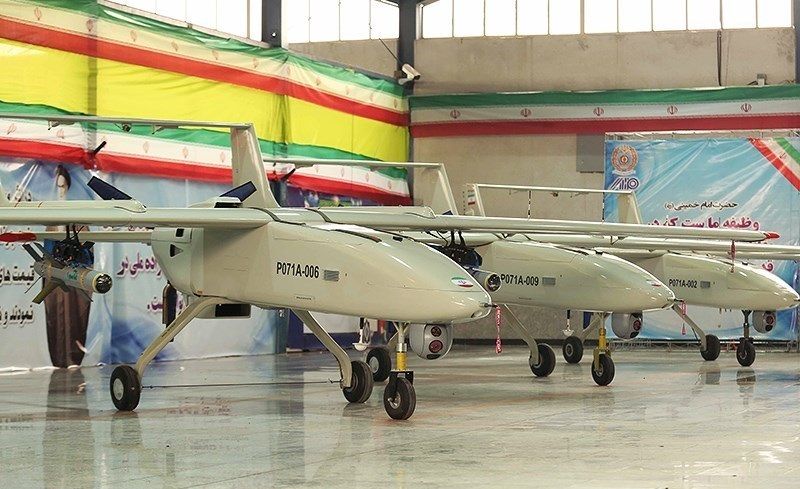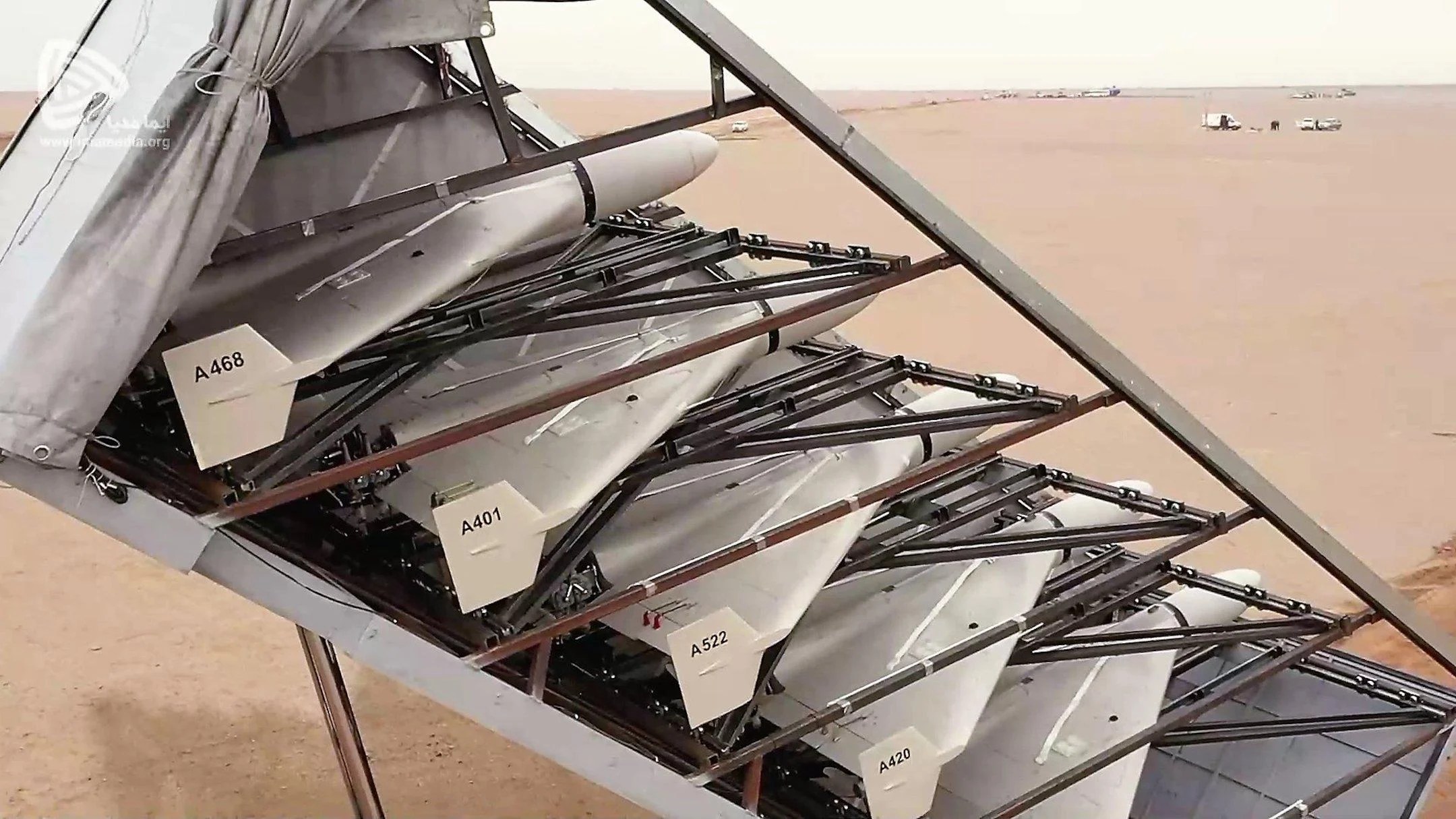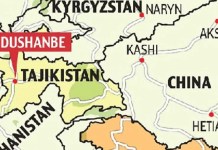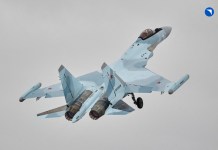Iranian-made drones have built a reputation for themselves in the ongoing Russia-Ukraine war. While these drones are not as technologically sophisticated as US, Israeli, Chinese, or even some Russian-made drones, Moscow effectively employs them to destroy Ukrainian positions.
Kyiv was rocked on October 17 by the fresh wave of air strikes conducted by Russia using Iranian-made Kamikaze drones that killed at least four people in the Ukrainian capital.
The Ukrainian Foreign Ministry said on October 17 that in the last week alone, the Russian military has struck through over a hundred Iranian kamikaze drones against residential buildings, power stations, sewage treatment plants, bridges, and playgrounds in several Ukrainian cities.
⚡️Scenes in Kyiv after the arrival of a Shahed-136 Kamikaze drone. pic.twitter.com/xfNfH9fthj
— War Monitor (@WarMonitors) October 17, 2022
“A third of Ukraine’s energy infrastructure was affected,” the ministry statement said.
Iranian Drones Used By Russia In Ukraine
As discussed earlier by EurAsian Times, Iran has been a revolutionary in the UAV industry for many years. The country assumes a more prominent role as an emerging drone superpower in the Middle East.
Iran has many UAVs ranging from small, light short-range systems to medium to heavy unmanned aerial vehicles (UAVs) for intelligence, surveillance, and reconnaissance (ISR).
Iranian armed forces are known to operate more armed drones than many other nations that have twice their defense budget, and that too under crippling western sanctions.
Based on various media reports and evidence from Ukraine, Russia appears to have received two types of drones from Iran, the Mohajer-6 and Shahed-series, which could be used to conduct strikes, electronic warfare, and targeting.
While Iran has several UAVs in its inventory, the Mohajer-6, which has reportedly been delivered to Russia, is one of Iran’s top-of-the-line combat drones.

The latest in the Mohajer series of drones, the Mohajer-6, can fly up to 18,000 feet in the air, which exceeds the range of many short-range air defense systems in terms of altitude. The drone has a maximum range of around 200 kilometers with 12-hour endurance.
According to the US Army’s Training and Doctrine Command (TRADOC) website, the Mohajer-6 is an Intelligence, Surveillance, Target Acquisition, and Reconnaissance (ISTAR) UAV capable of carrying a multispectral surveillance payload and up to two precision-guided munitions.
The drone’s armament consists of two hardpoints, one under each wing, designed to carry one Qaem TV/IR glide bomb or one Almas missile. Per some unconfirmed reports, there are also variants of the Mohajer-6 having four hardpoints, two under each wing, capable of carrying the same munitions.
Ukrainian forces shot down the first Mohajer-6 drone flown by Russian forces on September 23 over the Black Sea.
? This is what the Iranian-made Mohajer-6 drone looks like, shot down by the Air Force of the Armed Forces of Ukraine in Odessa today. pic.twitter.com/5it0YUfjHm
— Toronto Television / Телебачення Торонто (@tvtoront) September 23, 2022
As for the Shahed series, it is known to have many UAVs with unique designs having no relationship to each other.
Initial reports suggested that the units sent to Russia could include the Shahed-129 and Shahed-191 drones, based on recent satellite imagery allegedly showing Russian officials viewing these two drones at Iran’s Kashan Airbase ahead of the reported purchase.
"This suggests ongoing Russian interest in acquiring Iranian attack-capable UAVs. To our knowledge, this is the first time a Russian delegation has visited this airfield for such a showcase." pic.twitter.com/mW6P9vQ2rO
— Nick Schifrin (@nickschifrin) July 16, 2022
However, so far, credible evidence from Ukraine has mostly been of the Shahed-136 kamikaze drones being used by Russian forces against Ukrainian positions. The drone is said to have a range of about 2,500 kilometers and can carry warheads weighing between five to thirty kilograms.
Compared to the Mohajer-6, Russian forces appear to be employing the Shahed-136 more frequently, per evidence in Ukraine.
Iranian Kamikaze Drones Big Threat To Ukraine
As reported by EurAsian Times, the Shahed-136 kamikaze drones have become a significant challenge for the Ukrainian Armed Forces.
The Russian military has successfully conducted swarm attacks using these drones against Ukrainian positions located as far as Kyiv, deep behind Ukrainian frontlines in the eastern part of the country.
⚡️??️ After the visit of Geran-2 Kamikaze UAVs to the 72nd Brigade of AFU⚡️
The drones landed on their barracks in Bila Tserkva, #Kiev region.
You can judge for yourself the price of stories about "minor damage to the brigade's location"https://t.co/d9YpGcSFtz#UkraineWarVideos pic.twitter.com/XOYcINQYdg— ???? SITREP ⚔ ?? – Rybar & Others in EN ? (@DeuNachrichten) October 5, 2022
Notably, the Russian military achieved an element of surprise in these swarm attacks, thereby minimizing the chances of repulsion by Ukrainian air defense.
These swarm attacks involve several drones (batches of five and above) launched at once from the same rack to overwhelm enemy air defenses. Russian forces reportedly used 12 drones for a single swarm attack.

The kamikaze drones provide Russia with an expendable and cost-effective alternative to its precious and expensive aircraft and cruise and ballistic missiles. Even if these drones were shot down, they would still deplete Ukraine’s prized stockpile of surface-to-air missiles (SAMs).
The Ukrainian Air Force Command spokesperson Yurii Ihnat described Shahed-136 as a small aerial target that flies mainly at low altitudes and is seldom detectable on radars.
The Shahed-136s were also used in large numbers during Russia’s bombardment of several cities in Ukraine, including the capital city, Kyiv, on October 10, as a retribution for the bombing of the critical Kerch Bridge that connects the Russian-occupied Crimean Peninsula to mainland Russia.
Shahed-136 drone flying towards the Ukrainian Ladyzhinska thermal power plant.
The flying moped successfully made its delivery pic.twitter.com/4qx2DC2Fx8
— LogKa (@LogKa11) October 11, 2022
Ukraine’s military specifically noted the use of Shahed-136s during this bombardment involving over 83 Russian missiles. Reports from Ukraine suggest the drones seriously damaged Ukrainian armed forces and infrastructure.
Experts Talk On Iranian Drones
Uzi Rubin, Israeli defense engineer, analyst, and currently a Research Fellow with Jerusalem Institute for Strategy and Security, told EurAsian Times – “The advantage comes from the design of the Shahed-136 suicide UAVs.”
He explained that the Shahed-136 is a very small, simple, low, and slow-flying unmanned air vehicle equipped with a simple piston engine driving a wooden propeller – more like a model aircraft than a weapon of war.
The video was shared by the military on Thursday, and incorporates footage captured by kamikaze drones and surveillance UAVs that were observing the strikes. The video shows direct hits on Ukrainian tanks, self propelled-artillery pieces, #shahed136 pic.twitter.com/PRd0AvriW2
— Aamir khan (@Aamirkh75167903) October 14, 2022
“It is very easy to operate – just upload the target coordinates and launch it with a small booster rocket – and very hard to detect by radars or electro-optic devices because of its tiny size (wingspan of about two meters), its slow speed – usually below the threshold of detection of most radars and its tiny infrared signature,” Rubin said.
Rubin also pointed out how Iran effectively used the Shahed-136 in September 2019 to hit the Saudi oil installation in Abqaiq, causing considerable damage and shutting the installation down for two months. “The Russians are exploiting the advantages built into the weapon by the Iranians,” Rubin said.
When asked about the Mohajer-6 drone, Rubin said that the Mohajer-6 is a different kind of weapon, as it is relatively large (wingspan of about ten meters), it flies in medium altitudes of about 15,000 feet.
“It is also quite slow. It is easy to detect and shoot down with anti-aircraft missiles, even with the older Soviet types the Ukrainians operate,” Rubin said.
This could explain why Russian forces are not using the Mohajer-6 as frequently as the Shahed-136. However, Shahed-136 does have some shortcomings as well.
“It [Shahed-136] is very difficult to detect, but if detected (means to detect it are now being developed), it is easy to shoot down because of its slow speed. Another shortcoming is the dependence on satellite navigation, which can be blocked, causing the Shahad-136 to lose its way,” Rubin said.
Apart from that, the Shahed-136 also makes a recognizable noise from a few kilometers away. Ukrainian soldiers have described the sound of the drone’s engine to those found on a motorbike or a lawnmower.
Ukrainian forces are using a mix of Soviet-era equipment and modern systems supplied by Western nations to counter the threat of Iranian-made drones.
Maj. Gen. Borys Kremenetsky, the defense attache at the Ukrainian Embassy in the US, said that the 9K33 Osa (NATO reporting name: SA-8) missile launchers and self-propelled Shilka anti-aircraft guns are very effective against the Iranian-made drones.
Additionally, Kremenetsky noted that the German-made Gepard air defense tanks also are being used to great effect to engage the suicide drones before they can inflict damage on the ground.
- Contact the author at tanmaykadam700@gmail.com
- Follow EurAsian Times on Google News




